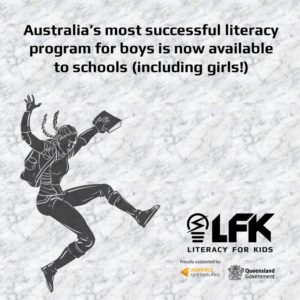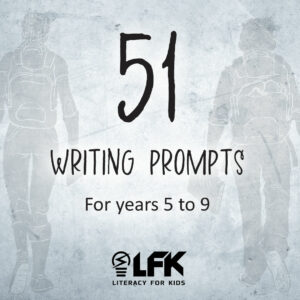Australia’s Reading Fail: Grattan’s damning report of our literacy landscape

Australia has a reading problem……but it doesn’t need to.
Our Founder and Literacy Specialist, Tanya Grambower, says, “This is nothing new, it’s something we’ve known for years. In fact, it is precisely why we started our business. As a teacher and a parent I get so frustrated that our Education Departments can’t see the wood for the trees. We have many excellent solutions that will help our children (including our own programs) and thousands of teachers are crying out for help.”
A report from the Grattan Institute (released this week) says Australia is in the midst of a reading crisis. A third of children cannot read at the level expected of them at their age and too often when they fall behind, there are few or inadequate measures to help get them back to where they should be.
In a standard Australian classroom with 24 students, eight struggle with reading proficiency. This failure to educate these children is a preventable tragedy. The primary reason behind their reading difficulties is the inadequacy of our teaching methods.
Despite the implementation of the National Assessment Program – Literacy and Numeracy in 2008, Australian students’ academic performance has regressed. This program was initially designed to identify and provide early intervention for students falling behind by testing all students in Years 3, 5, 7, and 9 nationwide.
What has gone wrong?
Since the 1970s, teachers have been instructed in a “whole language” approach to literacy, presuming that reading occurs effortlessly, naturally, and subconsciously. Nevertheless, increasing evidence demonstrated that this approach was unsuitable for a significant number of children, resulting in a lack of proficient reading, spelling, and comprehension skills throughout their lives.
Jordana Hunter, the institute’s education program lead, says substandard reading leads to a vicious cycle of falling even further behind, disruptive behaviour, disengagement and dropping out prematurely.
Our Education System
Our teachers are not to blame – in fact, our founder taught in this system and could see the sway away from literacy basics years ago. Hence, why she created literacy programs that focus on core literacy skills.
Numerous students, especially those in high school, often receive insufficient support under the assumption that they have already mastered fundamental skills. It explains why there has been a huge uptake of Literacy for Kids & Literacy for Boys in high schools! Both programs receive hundreds of emails from high school teachers who are desperate for resources to help low-literacy performers and mainstream students achieve better results.
According to the Grattan report, Australia grapples with a significant number of “instructional casualties” — students who ought to possess proficient reading abilities but have been inadequately taught.
In 2022, just 12 percent of Australian students demonstrated proficiency in reading, contrasting starkly with the 22 percent proficiency rate observed in Singapore.

Can we turn it around?
Yes – and it’s been proven!
Certain schools, such as Jandowae State School in Queensland, have proven that it’s possible to improve outcomes significantly. They used Literacy for Kids with Years 3 through 10. After independent testing, they saw that 100% of their Year 6 cohort improved their Reading Comprehension in less than 12 months. Here are their findings from their Literacy co-ordinator ~
One all-boys school has data confirming that their Year 7 and 8 boys improved their Comprehension scores by an average of 15% in just one term, after using Literacy for Boys as part of their literacy program.
It’s plain to see there are tools available, we just need to give them to our teachers.
In regional and remote areas, fifty percent of students fail to reach their expected reading level. Boys consistently exhibit lower performance compared to girls, and Indigenous students significantly lag behind their non-Indigenous counterparts.
Although business groups have expressed worries about the insufficient literacy or numeracy skills of many employees, and adult illiteracy remains prevalent, it seems that most governments have demonstrated limited ambition to address this issue.
Australia needs a reading revolution. Let’s help our dedicated teachers with the tools they need.
To Access the Grattan Institute Report, click here
Worth a listen for Teachers and Parents ~
Podcast Sold a Story: How Teaching Kids to Read Went So Wrong. This is an expose on how educators came to believe in something that isn’t true and are now reckoning with the consequences — children harmed, money wasted, an education system upended.
Worried about your class’ literacy? Want to enquire about your child’s literacy development? Send a message to info@literacyforboys.com.au or info@literacyforkids.com.au We love hearing from teachers and parents!
Want your students to finish strong in their literacy? Want more from your literacy program? Contact us for a 30-day free trial in your school or classroom. New schools receive this terrific Teaching Resource: 51 Writing Prompts. These were a complete hit with our schools last year and you will not be disappointed with these image-rich, kid-centred Writing Prompts.




Check out our blogs for more ideas and tips.
Identify Comprehension Gaps with these great cards
Steps to Successfully Support Disengaged Learners
See us featured in The Educator Australia magazine
Research confirms that early reading boosts literacy
Boys Love LFB – Here’s what they have to say!
Get boys reading in the digital age
Why write? Tips for reluctant writers
Brought to you by Tanya Grambower

